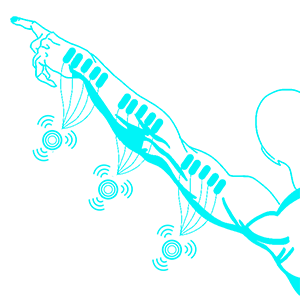Neural Lace
The “Neural Lace” is a term initially coined by the late and great Scottish Sci-Fi author Iain M Banks in the Culture novels).
Musk is too quick to jump into solution mode with his identification of the neural lace – which is likely still decades away from being useful – as the main piece of the puzzle. We need to think a bit more deeply about the wider problem first and work out the transitional technologies along the way. A “neural lace” (whatever tech that may end up being) is just one part of the solution to the underlying problem of the human brain’s limited and asymmetrical I/O.
The fundamental challenge is – as Musk says – the slow outbound bandwidth from our biological brain. While there is a relatively high upper limit on how much information we can get into the brain per second – our neocortex is great at interpreting huge streams of realtime inputs from our eyes, ears, somato-sensory system and constructing a model of reality based on that – the fastest we can get information out of our brains is severely constrained – we can currently only swipe our phone screens, type on a keyboard, make facial gestures, or try speaking at 11 words per second…
The hope of the “neural lace” tech is to enable humans to communicate – inbound and outbound – with more speed and hence enable us to do more, better, faster – as individuals and in groups.
But we’re immediately faced with the limitations of the existing [bio]tech platform – a typical human brain is estimated to have a raw computational power between 10^13 and 10^16 operations per second, a calculation based largely upon the brain’s energy consumption requirements. Any “neural lace” would need to overcome these energy constraints by tapping a different power source and/or operating more efficiently than a neocortex. Similar order-of-magnitude analyses has estimated the total memory capacity of a human over a lifetime at only 10^9 bits, or a few hundred megabytes.
A “neural lace” technology wouldn’t need to physically encapsulate too much raw computational power or memory to still be effective, however: all it would need to be able to do is interface directly with the neurons and synapses (…) in the neocortex and then communicate (up to the speed of light over optical fibre) with an external computation and storage resource – the cloud – and through that with other similarly interfaced brains.
So the envisioned “neural lace” is arguably just an evolutionary extension of our current proto-cyborg tech – we are already augmented with smartphones and other devices constantly connected to software services in the cloud – making us more productive / effective at home, at work, in our social relationships.
It is these cloud software augmentations that can be developed earliest, alongside improved outbound user interfaces (think a Formula1 driver’s cockpit or concert piano for fine-grained, high resolution feedback UIs). Leveraging imminent developments in virtual- and augmented- reality UX design and combining these with machine intelligence-based cloud pre-processors to crunch and interpret large streams of realtime data into human-readable and interactive form, the hunch is this will address the brain I/O problem and lead to step-changes in human individual and group productivity in the next decade, well before any effective direct brain-machine interface tech is tested and in production.
By then the biological brain may be such a small part of the overall computational infrastructure, the remaining need for a neural lace interface may disappear.















